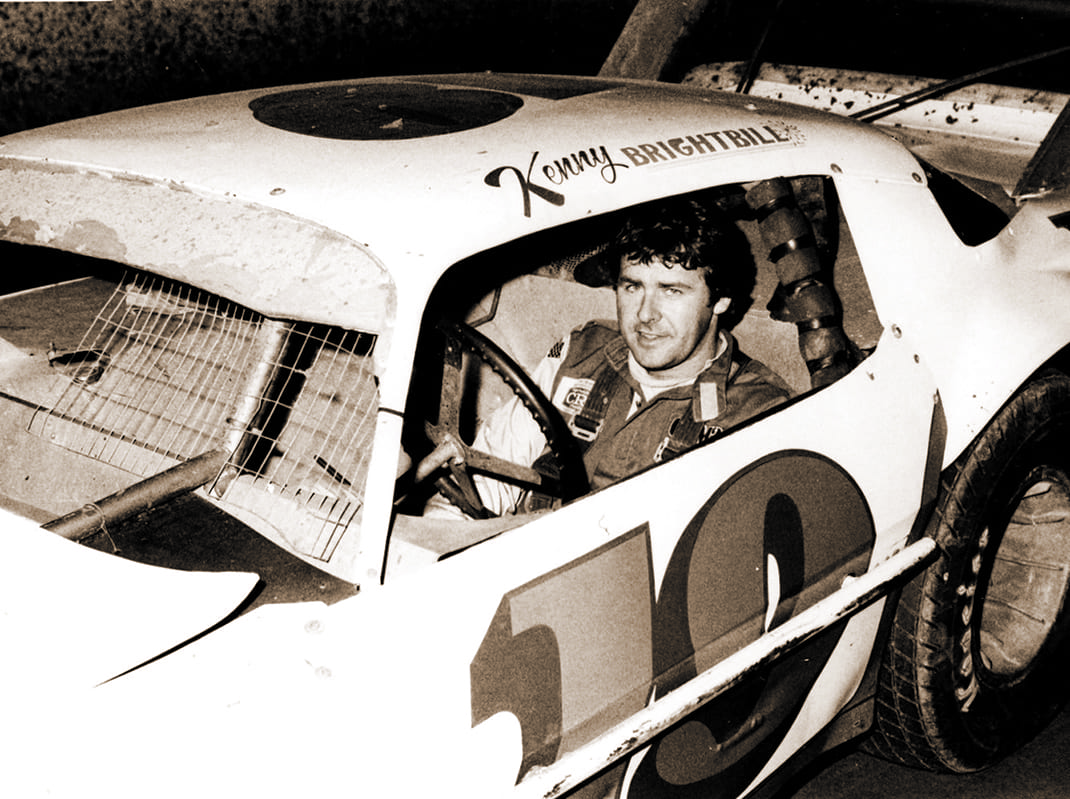Modified legend Kenny Brightbill is a fixture at Super DIRT Week, catching up with lifelong friends and checking out the latest in racing technology. But one can’t help but get the feeling that the 1988 Super DIRT Week modified winner would love just one more ride.
“It’s mostly out of my system, I guess,” said the one-time king of the Reading (Pa.) Fairgrounds. “I’d still like a ride but I’m 71. I did it for 50 years, so I can do without it, too. I raced for a living for 40 of those 50 years and I’m satisfied. I had somewhere between 400 and 500 wins, so it was a good run.”
Brightbill recalled his first car vividly, though he had little success with it.
“I went to New Jersey to look at a car Woody Johnson ran on asphalt,” Brightbill recalled. “I didn’t have enough money for that, but he had a ’37 Ford outside rusting away. It had a body, a square-tubing roll cage and a seat, but the frame was broken. I bought it for $35. I ran it with a 318 sportsman engine against the big blocks at Reading and only qualified once out of about 25 tries, but I learned a lot.
“I also ran it at Grandview and remember losing my best finish, a third, when the battery fell out at the end,” Brightbill noted. “But we kept struggling and got better, so the next season I built my first car from the ground up. We got a junkyard frame, bent the tubing for the cage and welded it all up.”
Brightbill ran most of the 1969 season using a fuel-injected small-block engine against the big blocks.
“Toward the end of the season, somebody helped me out with a big block and the last race of the season, we were fourth,” Brightbill remembered. “That encouraged me for the next year, so I got injectors for the big block and six races into the season, in April of 1970, I won my first race.
“That led to a ride with Bob Wertz and I was on my way. Those guys had been racing for years, where I had no mechanical experience. I learned a lot from those guys,” Brightbill noted. “You have to learn how the car should feel and how to hook it up to get that feel. The car gets better and better once you know how to change it, and running against guys like Al Tasnady, Dick Tobias and Gerald Chamberlain taught me how to race.”
In those days, a tough driver could carry a car that wasn’t just right and Brightbill found he was good at that.
“It helped that I could manhandle it,” he said. “I grew up on the farm and I was a bricklayer by trade. I knew what work was and that helped with the race car, too. Once we got toward the top of the points, we’d start between 16th and 18th every night and you had to go hard every lap.”
Brightbill earned 135 victories and four championships in 10 seasons at the Fairgrounds before the speedway gave way to a shopping center. By comparison, Chamberlain had 92 wins and Tobias 90 at the legendary half-mile track.
“Reading was obviously my favorite track, but it closed in ’79 and I had to run some places I didn’t really care for,” recalled Brightbill. “But I figured you had to learn to get around them if you were going to make a living. Like Lebanon Valley up in New York. It was really fast with tight corners and we didn’t have anything like that near home. But once you got onto it, it was OK.”
Typical of Brightbill’s nomadic schedule, he would win three features at Lebanon Valley, including the 1988 Mr. Dirt Track USA event, and looked like a regular there.
“I actually started going up to New York for Glenn Donnelly,” recalled Brightbill. “He wanted me to run against his guys in big shows and he was the first one to help me out with travel money. I got experience running the slick tracks like Rolling Wheels and Weedsport, but it was tough. With guys like Bob McCreadie, Jack Johnson and Alan and Danny Johnson all going good, you really had to buckle down to get the job done.
“Everybody thought Reading was wet and heavy, but it used to be pretty slick across the middle, so you had to run down against the rail or up on the cushion to get any bite. The middle was like ice, but I got used to that, which helped me in New York.”
Click below to keep reading.
